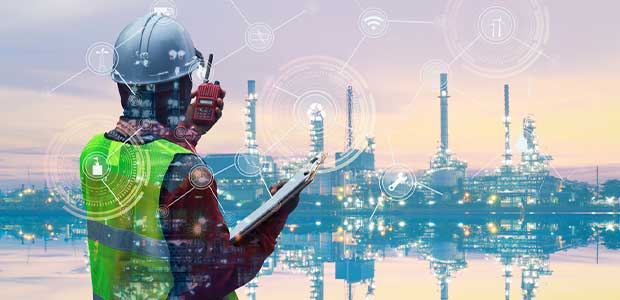
Transforming Oil & Gas Environmental Compliance Through a Connected Approach
Companies must consider the effect emissions have on their field personnel.
- By Sean Stinson
- Sep 01, 2021
In recent years, the oil & gas industry has faced increased regulatory pressure as governments around the world seek to reduce a variety of emissions commonly generated by refineries, drill sites and platforms and processing plants.
This trend gained additional momentum on June 30, 2021, when U.S. President Joe Biden signed a bill that repealed previously rolled back regulations on methane emissions from oil & gas operations. The U.S. Environmental Protection Agency’s Clean Air Act provides yet another set of guidelines for the industry. Others have proposed a wide range of policies to limit or penalize methane gas leaks that would add to the list of requirements for oil & gas companies. Required tactics would include proactive leak detection, facility repair and hazard mitigation or the establishment of gas capture rate minimums.
In addition to added regulatory pressure, oil & gas companies must also consider the effect emissions have on their field personnel. Many cases result in both short- and long-term risks such as toxic gas exposures and flammable hazards that can impact workers’ health or even result in death.
The presence of hazardous substances can also have a large impact on quality of life and mental wellbeing both at, and away, from the workplace. Leading groups such as the National Safety Council have taken notice, creating programs such as the Work to Zero initiative that focuses on eliminating workplace fatalities by 2050 through the use of safety technology.
As environmental compliance requirements and workforce health and safety challenges continue to increase, oil & gas companies are tasked with reducing greenhouse gas emissions while maintaining production levels and profitability. These efforts require a strong collaboration between safety and operations teams and can be challenging. Yet, they represent a transformative shift in approach in the industry toward a greater focus on public health and industry sustainability.
Connected Safety’s Role in Oil & Gas Sustainability
In recent years, connected technology has grown in popularity in the consumer space, from tracking an Uber’s location on our phones to monitoring our heart rate on our wrists. Similar technology has made its way to the industrial sector, where it can enhance worker safety, amplify gas detection and play a major role in organizations’ emissions reduction programs.
This article originally appeared in the September 2021 issue of Occupational Health & Safety.